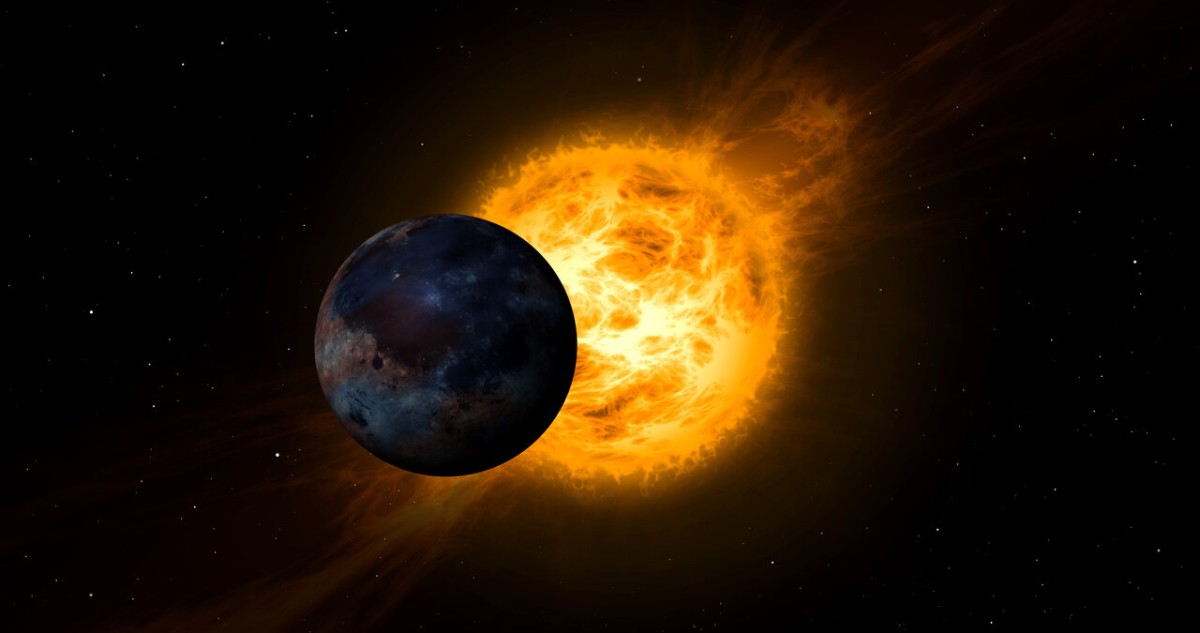Share This
Related Posts
Tags
Burning Question
By Joel Nelson on Apr 14, 2023 in News
Some potential dangers are close at hand: pandemics, extreme weather, volcanoes and computer viruses, among others. Another one is 93 million miles away: the sun. The life-enabling nuclear fusion ball that Walt Whitman marveled as “O so amazing and broad—up there resplendent, darting and burning!” also holds the power to cause chaos for humanity and its various forms of commerce.

The danger comes in the form of solar storms. One such event occurs when the sun releases a blast of plasma called a coronal mass ejection (CME) that arrives at Earth a few days later. Another ejection, known as a solar flare, comprises a burst of radiation traveling at the speed of light. When one of these phenomena hits Earth’s magnetic field and atmosphere, it creates a geomagnetic storm that can cause satellites, transformers, relays, sensors and other equipment vital to power grids, navigation, internet service, defense systems, financial transactions, communications and any number of other operations to fail.
A large-scale CME or flare, Forbes reported last year, “would knock out power plants, transmission lines, and substations for entire regions or cities. Huge swaths of the world’s population could be without power for weeks at a time, leading to health crises, food shortages, and devastating economic effects.”
Anyone tempted to dismiss such a scenario as science fiction should consider the Carrington Event of 1859, the largest solar storm ever recorded. This CME caused telegraph systems around the world to fail catastrophically. Scientists have found evidence of even larger event in A.D. 774, called the Miyake Event.
A geomagnetic storm one-third the size of the Carrington Event hit Quebec, Canada, in 1989, causing the electric grid to collapse and putting 5 million people out of power for nine hours. Twelve years later, scientists detected a major solar flare. Although more powerful than the 1989 flare, it was not aimed directly at Earth. But the next one might be.
Enhancing detection and precautions
“The question of our society facing a catastrophic geomagnetic isn’t a ‘what if’ but rather a ‘when,’” says Continuity Insights, an information source for business continuity professionals. That’s why more than 25 U.S. federal government programs have been established to help prevent solar storms from damaging the power grid.
Part of the federal government’s effort is the Deep Space Climate Observatory (DSCOVR). Launched in 2015, this National Oceanic and Atmospheric Administration (NOAA) satellite provides data about the timing and speed of solar bursts. DSCOVR will be supplemented by more advanced warning systems in development to shut down power systems and reduce the risk of overload. Meanwhile, utility providers are building capacitor banks capable of dissipating excess energy and electricity-dampening devices that protect critical equipment.
The increasing decentralization of power generation along with a higher prevalence of microgrids has made widespread blackouts like the 1989 Quebec incident less likely. Advances in sensor technology enable reports on solar disruptions from remote areas via satellite, enabling fast corrective actions and helping power companies learn from an event.
Automated maintenance systems are more intelligent than ever, raising voltage alarms when necessary and enabling engineers to manage generation and power flow to keep voltage within a safe range. And the North American Electric Reliability Corporation (NERC), a regulatory authority that focuses on grid risk reduction, reliability and security, requires all transmission systems operators and power generators to operate magnetometers and report magnetic disturbances of a certain magnitude.
While nobody can control the sun’s behavior, “one can protect oneself with advance information and proper precautions,” NASA says. Guidelines for businesses from the U.S. Department of Homeland Security and other solar storm authorities include:
- Adopting high-quality transformers that help resist power surges from minor to moderate solar flares.
- Establishing relationships with NOAA and other solar storm authorities.
- Coordinating with local, state and federal governments on mitigating effects of a large event.
- Create a readiness plan for safeguarding electronics during a solar storm, similar to crisis plans for cyberattacks, fires and other emergencies.
- Backing up essential data with hard copies.
The sun, says Piyush Mehta, an assistant professor of mechanical and aerospace engineering at West Virginia University, “is like a child that often throws tantrums. It’s essential for life to go on, but its ever-changing disposition makes things challenging.” Fortunately, awareness and planning can help governments, businesses and individuals mitigate those challenges.
